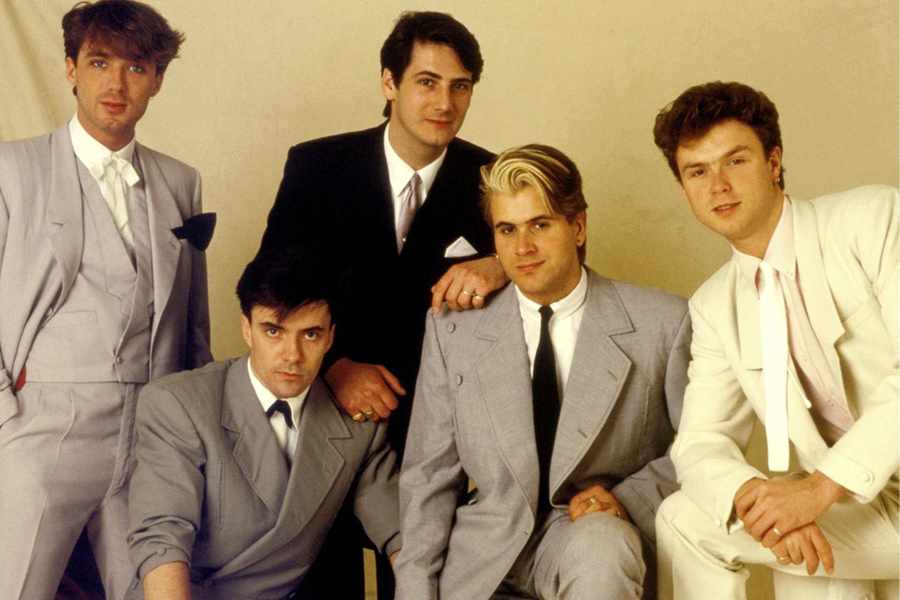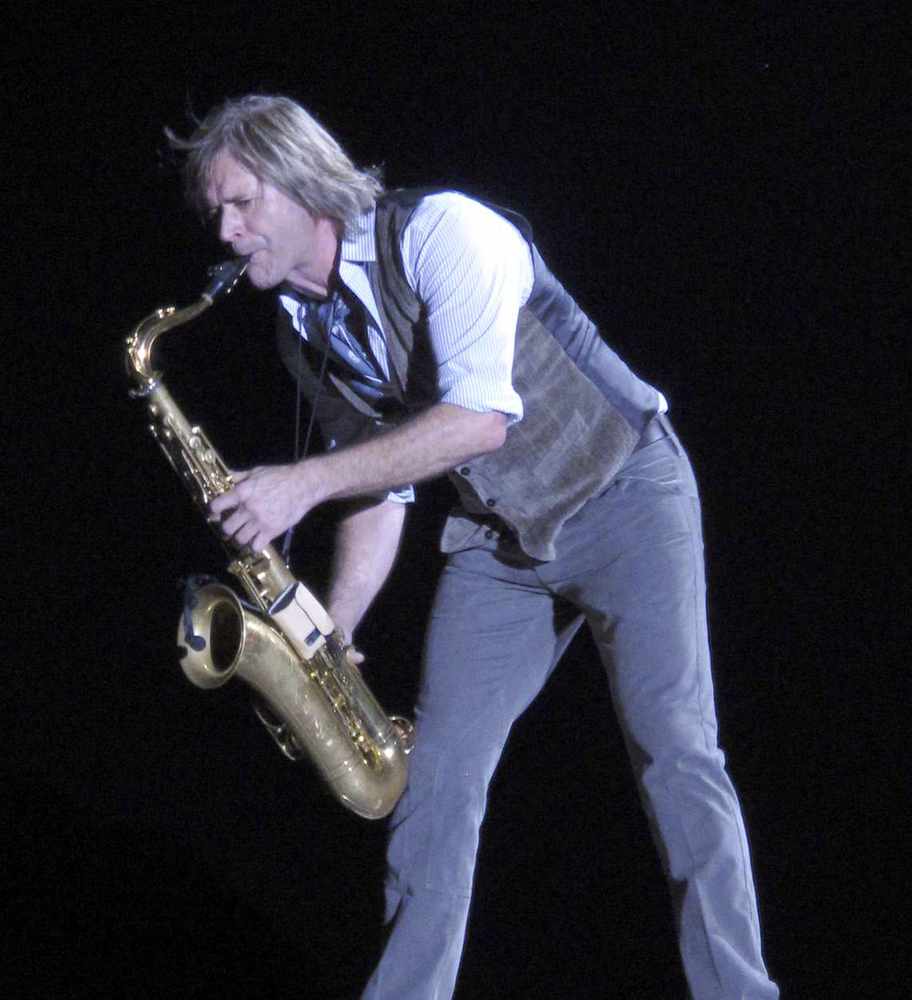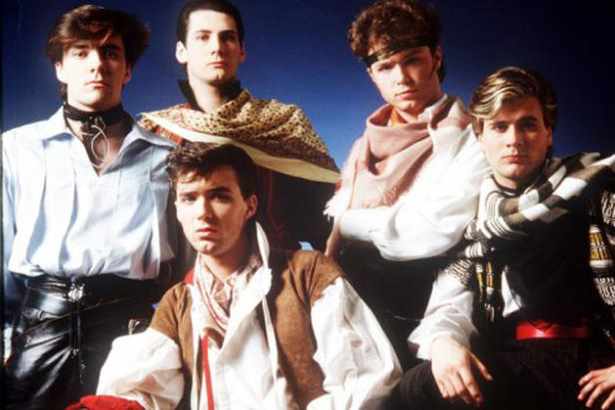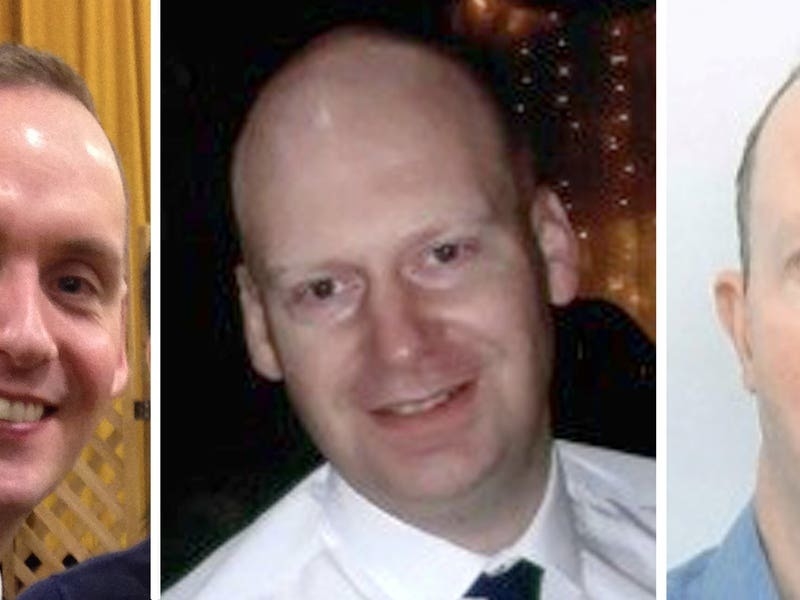‘My dad always had a real fascination for the Island,’ says the Spandau Ballet star, chatting over the phone from his London home.
‘He liked to read books on the Occupation and visit the War Tunnels, and I’ve inherited that interest from him.’
As such, when the saxophonist broke his leg performing on stage in 1985, he knew exactly where to come to recuperate.
‘I spent a few months in Jersey with Tony Hadley,’ he says.
‘There are pictures of me hobbling around the Island on crutches.
‘There’s a lovely kind of chilled-out Sunday afternoon feel to Jersey.
‘I don’t know why, it’s just got that sort of vibe about it.’
And now Steve is returning to Jersey once again, as Spandau Ballet – Steve, Tony, brothers Gary and Martin Kemp and drummer John Keeble – headline next weekend’s Legends in the Park concert.
It will be the first time the much-loved New Romantics have played in Jersey since their concert at Fort Regent in 1989.
Back then, the group were on the verge of splitting; now, however, they’re reformed and performing to the best reviews of their career.
‘I’m very much looking forward to it,’ says Steve.
‘We haven’t played for a few weeks now and it’s felt a little like we’ve taken our foot off the pedal, so I can’t wait to get stuck back in again.’

Often seen as one of the quintessential new wave bands of the 1980s, Spandau Ballet enjoyed phenomenal success throughout the decade, with era-defining singles such as Gold and True firmly establishing them in the upper reaches of the charts.
It was all a far cry from their humble origins as enthusiastic working-class schoolboys rehearsing in their North London comprehensive.
By the end of the decade, however, the group were falling apart, culminating in Norman, Hadley and Keeble launching an unsuccessful court case against Gary Kemp over song-writing royalties.
So painful was the resultant split that it seemed the group were destined to go their separate ways indefinitely.
‘Certainly, back in the 1990s I couldn’t ever imagine us reforming,’ says Steve. ‘There was a lot of bitterness.’

Indeed, it would be almost two decades before the first steps towards reconciliation took place, at the behest of none other than the late, great Steve Strange.
‘He was a lovely man, God bless him.
Steve had long since taken up permanent residence in Ibiza, having established himself as a popular figure on the Mediterranean island’s music scene, and it was here where the two estranged former bandmates were reunited.
‘I was very touched when Martin came to see me,’ says Steve, still audibly emotional at the memory.
‘We hadn’t seen each other for ages.
‘I’d never fallen out with him, but because of the situation with Gary, by default I didn’t see anything of Martin, who obviously had to remain loyal to his brother.
‘We made up for lost time and got well and truly sloshed!
‘Eventually, Martin mentioned Gary and I guess my mood had softened, because I asked how he was.
‘Martin was kind of shocked by this, but he said, “He’d love to speak to you”. It took a bit of time, but eventually we got in touch and before long Gary came over to Ibiza as well.
‘I thought, right, that’s the first step, now I just need to get John and Tony on board.’
This, unfortunately, proved easier said than done, as the group’s erstwhile singer was not interested in a reunion.
‘John was keen but Tony wasn’t having any of it,’ says Steve.
‘I guess he also had his solo band and he felt loyal to them. So it took a fair few years, but we got there in the end.’
They did indeed. By 2009, the newly-reformed Spandau were playing to packed crowds and even found time to record a new album, Once More, the title track of which marked Steve’s co-songwriting debut.
Now, he says, ‘we’re all getting on like a house on fire.’
The critical acclaim their comeback received has been especially rewarding in light of the hostility the group occasionally attracted in the music press during their heyday.
‘Well, I don’t think people can criticise us any more because they know we can play,’ he says.
‘The music press, they like to have a dig, and sometimes someone will review a gig and you can tell by the write-up that they’re not a fan, but even they will say how surprised they were at how good we are as musicians and how many good songs we’ve got.’
Nevertheless, Steve admits that the band did themselves few favours during their first run of fame.
‘We always said we were good, just not loud enough,’ he says.
‘We were more into shouting about pop culture and clothes.
‘We didn’t appreciate just how good we were as a live performing unit.’
There were also the obligatory children’s TV appearances to contend with.
‘They were horrible, those things. You’d have to get up at the crack of dawn and get on some train up to Manchester. It was ridiculous.
‘Ultimately, we just wanted to be taken credibly. I mean, even teeny pop bands like One Direction want a bit of credibility.’
They certainly aren’t short on credibility these days, however, and Steve remains bullish as to the reasons why: ‘It’s because we’re very good at what we do.
‘That might sound arrogant, but it’s true. We’re at the absolute top of our game, no doubt about it.’
Their critical standing has been additionally boosted with the release of Soul Boys of the Western World, director George Hencken’s in-depth documentary detailing the group and their history.
It’s full of entertaining anecdotes from all five members, as well as fascinating archive footage tracing the group all the way back to their teenage origins as The Cut.
‘We started out doing R&B covers during school lunch breaks,’ says Steve. ‘Originally we had a guy called Michael Ellison in the band because he had a bass and a PA system and that’s what we needed at the time. Then Martin took his place, just because, well, he looked great!’
The group’s sound was initially more hard-edged and punk-orientated than that for which they would later become famous.
‘There was a definite punk edge to our sound,’ says Steve.
‘We were quirky and kind of in-your-face, but with melody too.
‘We were building that bridge between punk and power pop and were always looking to be that bit more colourful and glamorous. Looking back, we were quite ahead of the time.’
Ultimately, the forward-thinking quintet decided that the doom-laden punk ethic didn’t sit well with their future ambitions.
A seismic shift then occurred in the group’s musical direction when they became regulars at the infamous Soho nightclub Billy’s, a precursor to the better-known Blitz.
It was here that Spandau Ballet, as they were now called, first discovered innovative electronic bands such as Kraftwerk and Gina X.
‘They’d play a lot of synth-driven stuff, mixed in with Bowie’s Berlin trilogy, in particular Low and Lodger,’ recalls Steve.
‘That was it then, we just knew we had to get a synthesiser, so we all chipped in and got one on HP.
‘It was a small monophonic Yamaha CS 10 and that then became the focal point of the band’s sound.’
The result would prove to be the group’s breakout hit: 1980s riff-heavy classic To Cut A Long Story Short.
Over the ensuing years, the group made a conscious decision to aim for the mainstream; this in turn coincided with Steve taking up the saxophone.
‘I learnt to play using one of those basic teach-yourself books,’ he laughs. ‘They’re aimed at kids but it’s the best way to learn a new instrument.’
Before then primarily a guitarist, Steve’s imaginative sax solos would soon become the group’s trademark sound and help contribute to the million-selling success of their subsequent album, True, and its accompanying single.
‘It’s undeniable that the sax is now seen as my signature instrument,’ says Steve.
‘It’s part of that blue-eyed soul sound for which we’re known. I do feel more empowered when I’m playing it than with any other instrument.
‘It sounds very clichéd and corny, but when I play the sax on stage, it’s almost as if it has a life of its own.’
Islanders will be able to see – and hear – for themselves next weekend when Steve and his Spandau bandmates take to the stage in Howard Davis Park.
‘You know, people can say that we “sold out” or whatever they want to call it, but if selling out means global success and selling millions of records and being number one around the world, well, then I say bring it on!’

- The British new wave band were formed in London in the late 1970s and went on to become one of the most successfull bands of the New Romantic era.
- They comprised of Tony Hadley, Steve Norman, John Keeble, and brothers Gary and Martin Kemp.
- Spandau Ballet’s debut single To Cut a Long Story Short reached number five in the UK in 1980, was the first of ten UK Top 10 hits.
- The group had a number one single in 1983 with the song True, and the follow up single, Gold, reached number two.
- In 1990, the band split up. The Kemp brothers went on to play the lead roles in the film The Krays, before Martin Kemp later landed the role of Steve Owen in the soap opera EastEnders. Tony Hadley had a career as a solo artist.
- In the 1990s, Hadley, Norman and Keeble launched an unsuccessful court case against Gary Kemp for a share of Kemp’s song-writing royalties from his work with Spandau Ballet. The three non-Kemp members later toured as a trio, but as they had to sell their shares in Spandau Ballet’s company to Gary Kemp to pay off legal debts, and that company owned the rights to the name of Spandau Ballet, they had to tour under the name of Hadley, Norman and Keeble.
- Spandau Ballet reunited in 2009. when tickets for their show at Londons O2 Arena sold out in just 20 minutes.
- The band recently scored the number two grossing film in its week of release, with the critically lauded Soulboys Of The Western World.This is now being followed by a 13-date live arena tour beginning next month.







